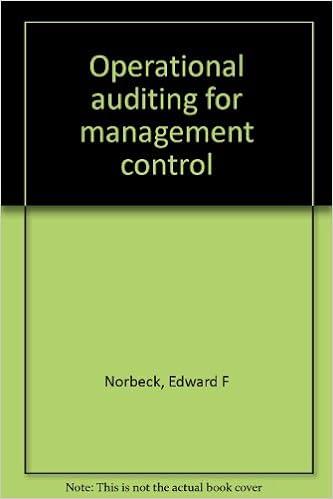Answered step by step
Verified Expert Solution
Question
1 Approved Answer
3. Composite Ratios or Inter-statement Ratios, i.e., ratios based on figures of profit and loss account as well as the balance sheet, e.g., fixed assets

3. Composite Ratios or Inter-statement Ratios, i.e., ratios based on figures of profit and loss account as well as the balance sheet, e.g., fixed assets turnover ratio, overall profitability ratio, etc. Functional Classification. The traditional classification has been found to be too crude and unsuitable because analysis of Balance Sheet and Income Statement cannot be done in isolation. They have to be studied together in order to determine the profitability and solvency of the business. In order that ratios serve as a tool for financial analysis, they are classified according to their functions as follows: 1. Profitability Ratios, 2 Turnover Ratios, and 3. Financial Ratios. In the following pages we are explaining the ratios covered by each of the above categories in detail. 11.6 PROFITABILITY RATIOS Profitability is an indication of the efficiency with which the operations of the business are carried on. Poor operational performance may indicate poor sales and hence poor profits. A lower profitability may arise due to the lack of control over the expenses. Bankers, financial institutions and other creditors look at the profitability ratios as an indicator whether or not the firm earns substantially more than it pays interest for the use of borrowed funds and whether the ultimate repayment of their debt appears reasonably certain. Owners are interested to know the profitability as it indicates the return which they can get on their investments. The following are the important profitability ratios. 1. Overall Profitability Ratio. It is also called as "Return on Investment (ROI). It indicates the percentage of return on the total capital employed in the business. It is calculated on the basis of the following formula: 58 Operating Profit x100 Capital Employed The term capital employed has been given different meanings by different accountants. Some of the popular meanings are as follows: (1) Sum-total of all assets whether fixed or current (ii) Sum-total of fixed assets. (iii) Sum-total of long-term funds employed in the business, i.e.: Share Reserves Long-term Non-business Fictitious Capital + and Surplus + Loans Assets Assets In management accounting, the term capital employed is generally used in the meanings given in the point third above. The term "Operating Profit means 'Profit before Interest and Tax. The term 'Interest' means 'Interest on long-term borrowings'. Interest on short-term borrowings will be deducted for computing operating profit. Non-trading incomes such as interest on Government securities or non-trading losses or expenses such as loss on account of fire, etc., will also be excluded. The computation of ROI can be understood with the help of the following illustration: Illustration 11.2. From the following figures extracted from the Income Statement and the Balance Sheet of Anu Pvt. Ltd., calculate the Return on Total Capital Employed (ROI): Particulars Particulars Fixed Assets 4,50,000 Reserves 1,00,000 Current Assets 1,50,000 Debentures 1,00,000 Investment in Government Securities 1,00,000 Income from Investments 10,000 Sales 5,00,000 Interest on Debentures at 10 per cent Cost of Goods sold 3,00,000 Provision for Tax at 50 per cent Share Capital: of Net Profits 10 per cent Preference 1,00.000 Equity 2,00,000
Step by Step Solution
There are 3 Steps involved in it
Step: 1

Get Instant Access to Expert-Tailored Solutions
See step-by-step solutions with expert insights and AI powered tools for academic success
Step: 2

Step: 3

Ace Your Homework with AI
Get the answers you need in no time with our AI-driven, step-by-step assistance
Get Started


